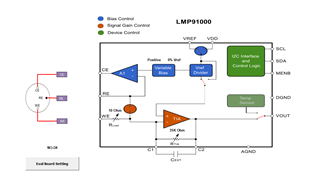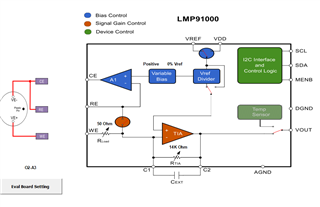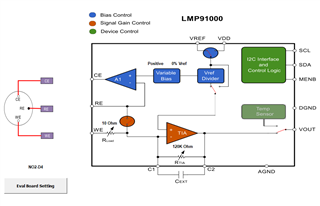Other Parts Discussed in Thread: THS4551, OPA625, ADS8910B
Hi,
I'm planning to feed the output to the LMP91000 in 3-Lead Amperometric Cell in Potentiostat Configuration into a differential AN+/- input of an A/D converter. Best would be to have access to the internal zero generated by the LMP91000 to be connected to the negative input of the A/D converter. This allows for potentially turn on the A/D PGA, if available, to increase resolution.
Assuming that the pin C1 is a virtual heart, would be an option to connect the signal pair available at C2/C1 pins directly to the AN+/- of a differential A/D converter?
Thank you and best regards.
Marco.




